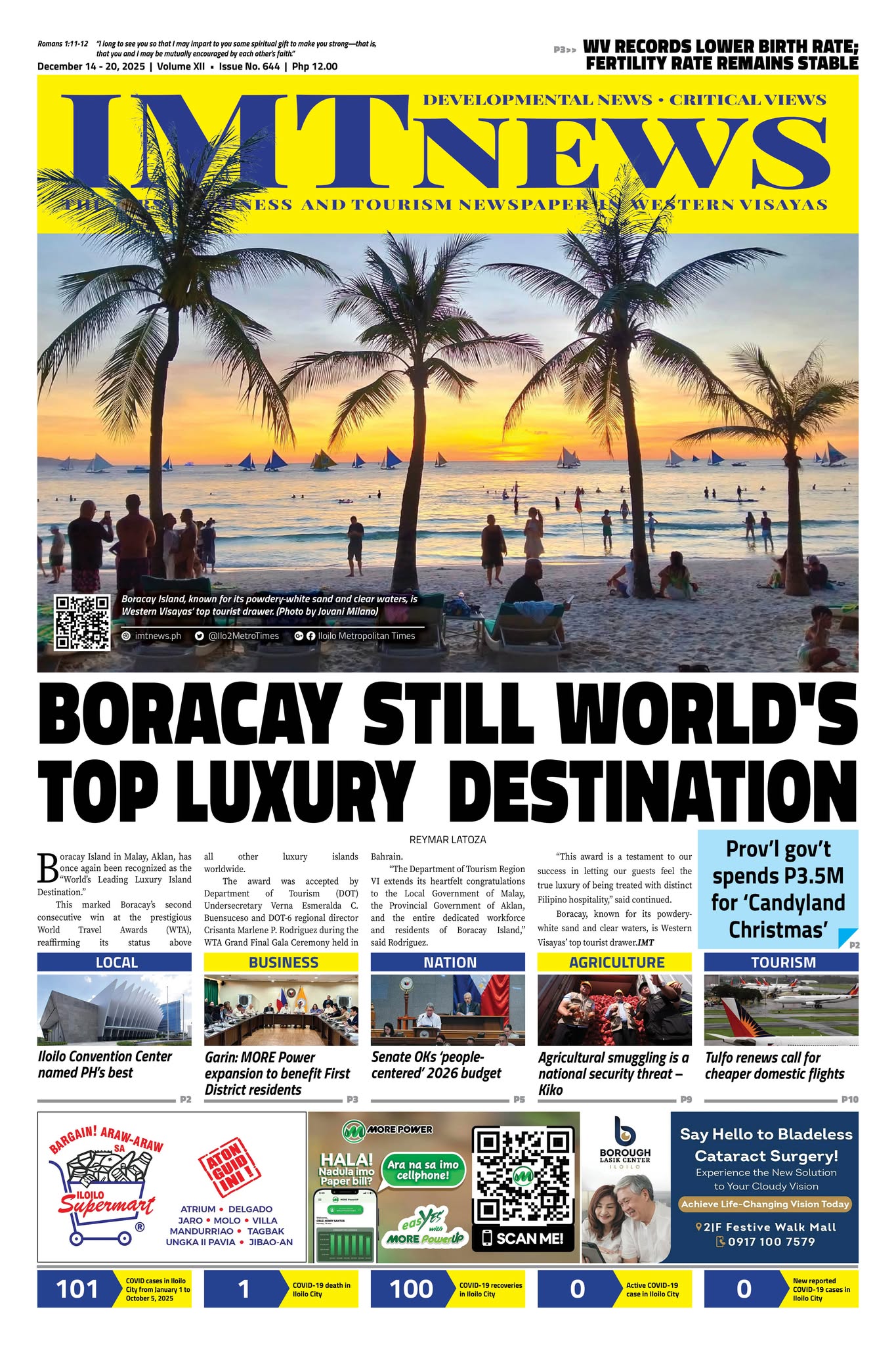Can we genuinely speak of an “Ilonggo Komiks” today, not as a nostalgic artifact from a bygone era, but as a living, breathing cultural phenomenon? This question is not posed merely out of idle curiosity. It is a question that strikes at the heart of cultural production in the regions, in a country where the center-periphery dynamic stubbornly persists in shaping which artistic expressions are deemed visible, viable, and valuable. Over the past decade, the presence of Ilonggo comic artists has been, to put it mildly, tenuous. Their visibility in both national and even regional circuits has been sporadic at best, nearly vanishing altogether during the harrowing years of the pandemic. The global crisis did not merely stall creative production; it laid bare the vulnerabilities of already fragile ecosystems in regional arts communities. The identity and recognition of comic creators from Iloilo seemed to dissolve into silence, as though submerged beneath layers of more “pressing” concerns and survivalist priorities.
Yet history tells us, again and again, that cultural expressions, particularly those rooted in community and necessity, do not die so easily. In the years that followed that unsettling global rupture, a quiet and determined resurgence began. This resurgence did not arrive through grand gestures or spectacular breakthroughs, but through modest, underground, and fiercely independent efforts. Artists from Iloilo have begun reintroducing themselves and reclaiming space in the cultural landscape through zines, self-published komiks, workshops, and small press fairs. These are not the products of large industries or mainstream institutions. They are labors of love, born out of necessity, sustained by passion, and anchored in conviction. They are fueled by a belief that stories from Iloilo, told through the unique visual language of komiks, still matter.
What is unfolding within the Ilonggo comics community is not simply a revival. It is the slow, patient gestation of a movement. A movement without spectacle, without institutional backing or the safety net of established infrastructures. It is instead marked by the slow-burning tenacity that often characterizes the most consequential cultural shifts. This is a development both precarious and promising, deserving of our close attention, our critical engagement, and our support.
In the Philippines, discussions about komiks have often revolved around Manila-centric narratives, whether in terms of historical output, such as the storied pages of Liwayway and the dominance of Atlas during the komiks golden age, or in terms of current industry standards, where adaptation into film or migration into digital platforms often defines success. Regional efforts, when mentioned at all, are often reduced to mere footnotes. This marginalization reveals just how uneven the cultural terrain continues to be. In this light, the re-emergence of Ilonggo komiks, however modest and fragile, becomes an act of resistance against cultural erasure. It becomes a quiet yet firm assertion of presence, of relevance, of the right to be heard and seen.
For the purposes of this reflection, I will momentarily set aside the rich and colorful history of komiks in Iloilo, those pioneering artists whose works once graced the pages of Hiligaynon Magazine. That legacy is worthy of its own critical excavation, an endeavor that requires both scholarship and reverence. What demands our attention now is the present, unfolding narrative: the ongoing, often overlooked efforts of Iloilo’s contemporary comic artists to reclaim and reshape a distinctly local comics culture.
For more than half a decade, a small but fiercely committed cadre of artists has been quietly laying the groundwork for this resurgence. Through relentless creation, self-publication, and grassroots promotion, these artists are fostering a space for the next generation of Ilonggo readers to engage with a distinctly local form of visual storytelling. This is not simply about making comics for the sake of output. It is about cultivating cultural soil, about asserting that Iloilo’s stories deserve their own visual and narrative language, free from the filters of metropolitan approval.
At the vanguard of this movement are figures like Hermz Gacho, whose contributions to Iloilo’s underground and independent comics scene have been both prolific and provocative. His works not only entertain but often challenge the boundaries of genre and form, inviting reflection on the sociopolitical conditions that shape contemporary life. Alongside him is Zak Bravo, a fixture in the city’s independent arts community whose work spans not only comics but also illustration and other visual arts initiatives. His collaborations with fellow artist Sasha Bravo, herself a formidable talent, have helped expand and deepen the collective’s creative range, introducing new textures and perspectives to the evolving Ilonggo komiks landscape.
Further enriching this creative circle is Frances John Haro, an artist deeply invested in the promotion and development of local comics and illustration. Haro’s contributions extend beyond personal output. They manifest in the fostering of platforms and opportunities for fellow artists, building networks where none previously existed. Completing this constellation is Alden Sorongon, whose graphic artistry has found space in numerous local exhibitions and continues to challenge the limits of visual narrative within the region. Together, these artists embody the resilience and defiance of Iloilo’s comics community. Their work is not driven by commercial trends or the demands of algorithms. Instead, it emerges from a deeper commitment to keeping the spirit of komiks alive, evolving, and relevant to their community.
Central to this emergent ecosystem is Pasyon Komiks, a collective whose ambitions are refreshingly clear-eyed. Their aim is not simply to produce content, but to craft meaningful, socially engaged comics that serve as both artistic expression and cultural intervention. Their publications, such as Amaranhig: Retaliation (Vol. 4), EJK Zombies: Tallano Gold Heist!, Alden Sorongon’s OTW, and Hermz Gacho’s Dyablo Boyz! reflect a commitment not only to genre and craft but to the socio-political dimensions of storytelling. These are works that interrogate history, myth, and contemporary realities with equal parts irreverence and seriousness.
But Pasyon Komiks is not solely about artistic output. It is equally about outreach, about fostering a wider appreciation and deeper engagement with the art form within the local community. Their Facebook presence serves not just as a portfolio but as a chronicle of their efforts—workshops, talks, public engagements, and collaborations designed to spark dialogue and cultivate interest. These initiatives do more than build audiences. They cultivate critically engaged publics, communities that understand the value of local storytelling traditions and their relevance to contemporary life.
Their recent participation in the Philippine International Comics Festival, alongside fellow Ilonggo artist Mia Reyes, signals more than mere representation. It asserts Western Visayan creators’ rightful place within the national conversation on comics and culture. Events such as these illuminate the untapped potential of Iloilo’s comics scene, suggesting what could be possible if local and national institutions were willing to offer meaningful, sustained support.
It is important to recognize that for most Ilonggo artists, komiks-making remains a passion-driven pursuit, often balanced alongside their regular day jobs. Many of them have long been part of the broader creative industry, though much of their work has been for international publishers. Notable examples include former Pasyon Komiks member Jun Premiro, who previously worked with Marvel Comics. There are also pioneers such as Mia Reyes, Jann Galino, and the late Art Geroche, who once illustrated for DC Comics. These individuals stand as proof that Ilonggo artists have always possessed the talent to make their mark on the global stage. What sets the current generation apart is a renewed commitment to bringing this world-class artistry home, focusing on original Filipino stories and contributing to the revival and growth of the local komiks industry.
The question, then, is not whether Ilonggo Komiks exists. It undeniably does, albeit in fledgling form. The more urgent and pressing question is whether it will be allowed to thrive. What is at stake here is not merely a niche subculture but the broader issue of cultural equity. Without institutional recognition, whether through funding, infrastructure, or education, such movements remain vulnerable. Their momentum is difficult to sustain without systemic support.
It is no exaggeration to claim that literature and publishing could serve as vital pillars in the cultural and tourism industries of Western Visayas. Iloilo, with its deep reservoir of folk narratives, histories, and mythologies, is uniquely positioned to leverage comics as a medium for both preservation and innovation. Yet this potential remains largely untapped, in part because local government units have yet to fully grasp the cultural and economic value of investing in literary arts.
Similarly, the National Book Development Board (NBDB) must move beyond token gestures toward true regional inclusivity. If its mandate is indeed to advance Philippine publishing, then it must recognize the centrality of regional voices to any meaningful conception of national literature. Grants, workshops, residencies, and platforms must be actively directed toward communities historically excluded from the Manila-centric publishing apparatus. It is not enough to acknowledge these communities’ existence. They must be empowered and supported.
Ultimately, this is not merely a question of comics or regional arts. It is a question of cultural democracy. If the stories of Iloilo and countless other regions continue to be marginalized, then we perpetuate a literary and artistic monoculture that impoverishes us all. The voices from the peripheries matter precisely because they offer perspectives, narratives, and aesthetics that complicate, enrich, and challenge the dominant discourse.
To ignore them is not simply a disservice to future generations of artists and readers, it is an insult to the very idea of a pluralistic, inclusive Filipino culture. Let us be clear: culture does not survive through grandstanding or empty rhetoric. It endures through the quiet, stubborn, and relentless efforts of those who refuse to be erased, who continue to create even when no one is watching. The Ilonggo komiks community does not need permission to exist. What they deserve is recognition, respect, and solidarity. Because in their struggle lies not just their future, but the future of a Philippine culture that dares to call itself complete.
Noel Galon de Leon is a writer and educator at University of the Philippines Visayas, where he teaches in both the Division of Professional Education and U.P. High School in Iloilo. He serves as an Executive Council Member of the National Commission for Culture and the Arts-National Committee on Literary Arts.






